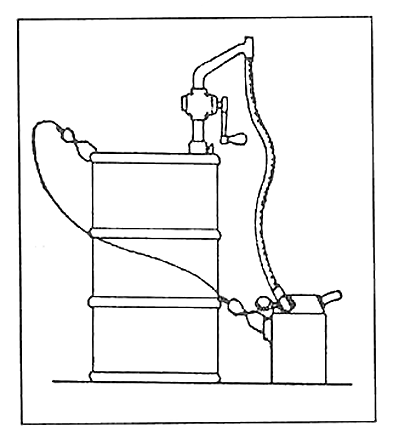
How should you respond if a plant manager suggests that you conduct training to eliminate this hazard? Do you simply provide what the plant manager wants or do you work to provide what the plant manager really needs?
The trap
Employers too often believe that training is the cure for most if not all their safety and health concerns. And employer’s views on training are often limited to traditional views such as classroom lecture and some hands-on exercises.In our example here, the plant manager wants you to gather together all the employees that fill transfer containers with flammable liquids. Then you should proceed to tell and show the employees what to do or not do and explain the consequences of improper actions.
Most EHS pros will say that the scenario just described is generally repeated over and over again with other hazards to the point where it consumes the majority of their time. But is the time being spent well? Regardless of how well you train, even if the training meets all the criteria for accepted training practices found in ANSI Z490.1-2001, training alone may not be effective in controlling most EHS hazards.

Performance consulting
In their book, “Performance Consulting: Moving Beyond Training†(1995 Berrett-Koehler Publishers), authors Dana & James Robinson describe training as merely an activity within a system. Performance consulting in their view considers the entire system and asks the question, “What actions are necessary to improve performance?â€The performance improvement that the plant manager probably seeks in our example is taking actions to ensure that no fire or explosion occurs during the transfer of flammable liquids. Training a select group of employees to be more aware of the hazard may or may not achieve actual performance improvement.
Our first consideration should be whether the hazard could be eliminated through engineering controls. For example, could a non-flammable material be substituted in the process? If the process must remain as is, then the system that should be evaluated in our example is summarized in Figure 2.
When we examine the entire system we might find that training a select group of employees can have little impact in achieving actual performance improvement. Employees might not believe it’s their job to maintain the bonding strap in proper condition. And if it is their responsibility, what happens if no one holds them accountable? Maybe resources are so strapped that maintaining the bonding strap in proper condition is the least of management or the employees’ concerns. Procedures for maintaining bonding straps in proper condition may not be clear or consistent.
The issue of bonding straps may not be included in periodic safety inspections. And if the hazard is observed, how is it reported? An employee could tell their supervisor about the hazard, but what if the supervisor forgets to inform maintenance that a safety hazard needs to be fixed?
All gaps and possible disconnects need to be examined. And as we examine the system, we find that more employees, including supervisors and managers, must be included to help fully resolve the concern.
Hard choices
We are faced with a difficult choice. On one hand, training is expedient and it is what the plant manager asked for. Complete the training quickly and you may receive compliments. On the other hand, we may understand that performance consulting is the most effective way to fully address the hazard and achieve actual and lasting performance improvement. But the performance consulting approach may overwhelm and turn off many plant managers.The example I described is not hypothetical. I lived it. In 1995, I provided a safety evaluation (at the corporation’s directive) for a new manufacturing operation in South Carolina. I observed and reported to the plant manager the missing and broken bonding straps for transfer containers of flammable liquids during the initial evaluation. Six months later during a follow-up safety evaluation broken and missing bonding straps were again an issue.
During the six months leading to the follow-up safety evaluation I received performance consulting training directly from Dana and James Robinson and felt armed with special knowledge. But the plant manager insisted training was the fix, while I pushed the performance consulting approach. The plant manager did not deny the value of performance consulting, but he felt it was beyond what they were capable of doing. In the end, he opted only for training.
Many EHS pros today are trapped in the training cycle. Training consumes the majority of their time And they are unable to build training into a safety system such as OSHA’s Voluntary Protection Program or equivalent (generally described in Figure 2). As a consultant, I too must often provide only what the customer asks for. And I train even though I know it is not the most effective fix for a particular hazard.
Where to turn
More employers, though, are beginning to appreciate the value of performance consulting. According to the American Society for Training and Development (ASTD), moving from training to performance consulting is one of the five major trends that will impact ASTD members in 2003. The other trends: linking learning to business strategy; E-learning; leadership development and coaching; and, diversity.You can learn more about performance consulting by visiting the ASTD Web site at http://www.astd.org/index_IE.html. Plus, you can explore the many web links to OSHA’s VPP and use it as a performance consulting model.
It’s best to initially promote performance consulting to managers in bite-sized bits to avoid overwhelming them. But the more we are able to convince management that training only is not the answer to eliminating or controlling hazards, the better off we all will be.